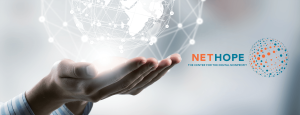Liberty in North Korea (LiNK), based in Torrance, Calif., banks on the need for instant gratification. “Individuals want to make a tangible impact. It’s innate,” said LiNK Vice President Justin Wheeler. “They want to see immediate and direct impact.” That’s why LiNK directs 100 percent of public donations to refugee rescues.
“In 2011, we ran a fundraising campaign with 100 percent of that going to rescues,” said Wheeler. “It was successful. In about 45 or 50 days we raised $120,000. We were able to really define a specific dollar amount: $2,500 saves one life. One year later, our organization grew in donors and dollars and had visited 1,000 universities and high schools, and we ran a general campaign for general support. The response was weak compared to when we pushed out the specific program expense.”
Wheeler said that helped convince LiNK that a 100 percent model for small and mid-sized individual donors was the way to go. Now, LiNK puts every dollar raised from the public to programs, and relies on major donors, foundations and corporate sponsors –collectively known as legacy donors at LiNK — for operating revenue.
LiNK has to market to these legacy donors in a different way than to other donors. “It takes a special person to understand that investing in operations is the same as supporting a refugee,” said Wheeler. He used the example of a legacy donor donating the yearly salary of a LiNK graphic designer. “The graphic designer will design x websites, x fundraising campaigns, and the campaigns generate x dollars so your investment will be tripled or quadrupled,” he said. “You’re investing in people who are making a direct impact.”
Small and medium donors are still the biggest source of growth for LiNK. “We’ve grown an average of 26 percent (a year), not because we’ve found larger legacy donors but by increasing small and mid donors,” said Wheeler. He said the organization’s focus on grassroots fundraising is attractive to the legacy donors. “When you make an investment, you want to see other investors,” he said. “A big part of our legacy outreach is our ability to raise money in grassroots, nontraditional ways.”
LiNK does very little direct mail marketing, instead driving donations on social media and peer-to-peer platforms. “Once a year at the end of the year, we target 200 donors (in a mailing) and raise less than 0.1 percent of our annual budget,” said Wheeler. “We raise most of our money through grassroots: online engagement, peer-to-peer, and our national tour program at high schools and colleges. We do more new media than mail, mostly because of our demographic,” which is Millennial-heavy, according to Wheeler.
Derrick Feldmann, president of creative firm Achieve in Indianapolis, Ind., said the 100 percent model works very well, especially for peer-to-peer. It gives a built-in talking point for fundraisers with limited experience. Neophyte philanthropists, like many of those donating to peer-to-peer campaigns, have something tangible around which to wrap their minds. “If you look at the concept of a 100 percent model, it’s a tool that a fundraiser uses to talk to a donor,” Feldmann said. “The good thing is that those inexperienced fundraisers, peer fundraisers who aren’t trained but are passionate, they’re going out and talking to friends, saying if you give, 100 percent of every dollar goes to mission. I think it’s a great piece for any peer fundraiser.”
The biggest challenge for LiNK’s 100 percent model is splitting the budget — one budget for overhead and one for programs. “We decided to separate the budgets because we look at our organization as a long-term game,” said Wheeler. “We don’t see our vision of our organization being accomplished in the next two or three years, more like 10, 15, 20 years. We want to make sure the organization can sustain 10, 15 or 20 years. We look at legacy donors as stakeholders who would sustain operations so we can mobilize the general public to scale our programs.”
This splitting of the budget can sometimes create problems. Wheeler said there have been times when LiNK had plenty of money for programs but worried about making payroll the next month. Wheeler concedes that was more common in the early days of implementing the 100 percent model when the organization did not have the network of legacy donors it has now.
“To do the 100 percent model, you have to have other funding streams accounting for overhead,” said Feldmann. “Individual donors are the target audience for 100 percent.”
Amherst County Habitat for Humanity in Amherst, Va., also implements a 100 percent model for public donations. Executive Director Craig Cassell said his Habitat affiliate relies on something stable for overhead such as mortgages receivable, which is income from the no-interest mortgage loans the affiliate provides to homeowners.
“It makes business sense to get our operations below something consistent coming in the door, which is our mortgages receivable,” said Cassell. “We have a nice percentage under mortgages receivable every month, so when the economy waves like it is we can keep things moving.”
It is much simpler for Cassell to do his books than for Wheeler. He is the only full-time staffer, and as a rural Habitat affiliate, overhead is low and operational expenses vary little from month to month. “It’s not as complex for smaller organizations to see that consistent number to stay underneath,” said Cassell.
Despite moving to a 100 percent model, Cassell has seen his donations dropping, so much so that he’s had to suspend new home building. He blamed the economy. “I know (the 100 percent model) would be a strength. People want to know they’re donating toward a program, not a paycheck,” he said. But he’s not surprised that the donations have dropped. “I think with the way the economy is and our conservative area, they’re skeptical about donating because they’re worried about their funding as well. I don’t blame them.”
Indianapolis-based Never Settle runs on a 100 percent model and relies on a small group of private and corporate donors to fund its operations. Never Settle raises funds for other organizations through peer-to-peer events, such as races and cocktail parties, with 100 percent of those funds going to the recipient organizations.
“If we’re able to give money to a program as a benefit to (recipient organizations), it’s a benefit for donors because we can make them a part of the story,” said Executive Director Jeremy Pittman. “From a donor perspective, a 100 percent model makes it clear about how funds will be used and the distinction between direct funds and administrative costs. That’s something donors are looking for, especially younger donors.”
One oft-cited organization with a 100 percent model is the New York City-based charity:water. The organization raised $22 million for programs in 2012, along with $11 million for operations, according to its 2012 annual report. “When we started charity: water, we made a bold promise –100 percent of public donations would go directly to the field to fund water projects,” according to the annual report. “We’d depend on private donors to cover our staff and operating costs. Six years in (the organization was started in 2006), we’re still keeping that promise!” Charity:water declined to comment for this article.
Not everyone is enthusiastic about the 100 percent models. Ken Berger, president and CEO of Charity Navigator, believes the models send the wrong message. The Glen Rock, N.J.-based watchdog group, along with GuideStar and the Better Business Bureau Wise Giving Alliance, is trying to change the conversation about administrative costs with its Overhead Myth initiative.
“It doesn’t help,” said Berger. “When you have these efforts I think it can foster a false impression. Although it’s nice when you have someone willing to cover overhead — operationally it makes things less difficult — if you aren’t communicating the message that we really need overhead and we’d like you to support the whole mission, we think it’s a problem.”
The Overhead Myth seeks to change the perception of overhead is a good metric for evaluating a charity. Berger believes organizations that use 100 percent models are sending the wrong message to donors and are ultimately hurting the sector. “Short-term gain can lead to long-term systemic problems,” said Berger. “There are many things you can do to see a surge in donations, but (you need to) realize you’re ultimately harming the entire sector and efforts to educate the public to the fact that overhead is vitally important.”
These organizations that use a 100 percent model, said Berger, are “looking at short-term gain, not long-term for themselves and for the sector.”
Overhead metrics are not the best way to evaluate a charity, said Never Settle’s Pittman. “What (a 100 percent model) can’t do is guarantee efficiency or accountability,” he said. “It costs money to make a social impact. That’s important to remember. The other thing is ‘program expenses’ can be a fluid term.”
Pittman cited the organization Invisible Children and its massively viewed viral campaign against Ugandan warlord Joseph Kony. “After that blew up, people looked into their books and were upset that their program costs were around creating media,” he said. “In our case that’s an administrative cost.”
Feldmann conceded there’s merit in “opening the discussion of overhead.” However, he believes that donors’ sophistication level is granular and not all donors need to be convinced of the importance of overheard. “The vast majority of the general public is not having an overhead discussion,” said Feldmann. “As donors become more sophisticated in philanthropy, they put additional filters on giving. Sometimes it’s overhead, sometimes it’s efficiency, sometimes it’s operating in a certain way. But the vast majority of public doesn’t discuss that, at least not immediately.” NPT











